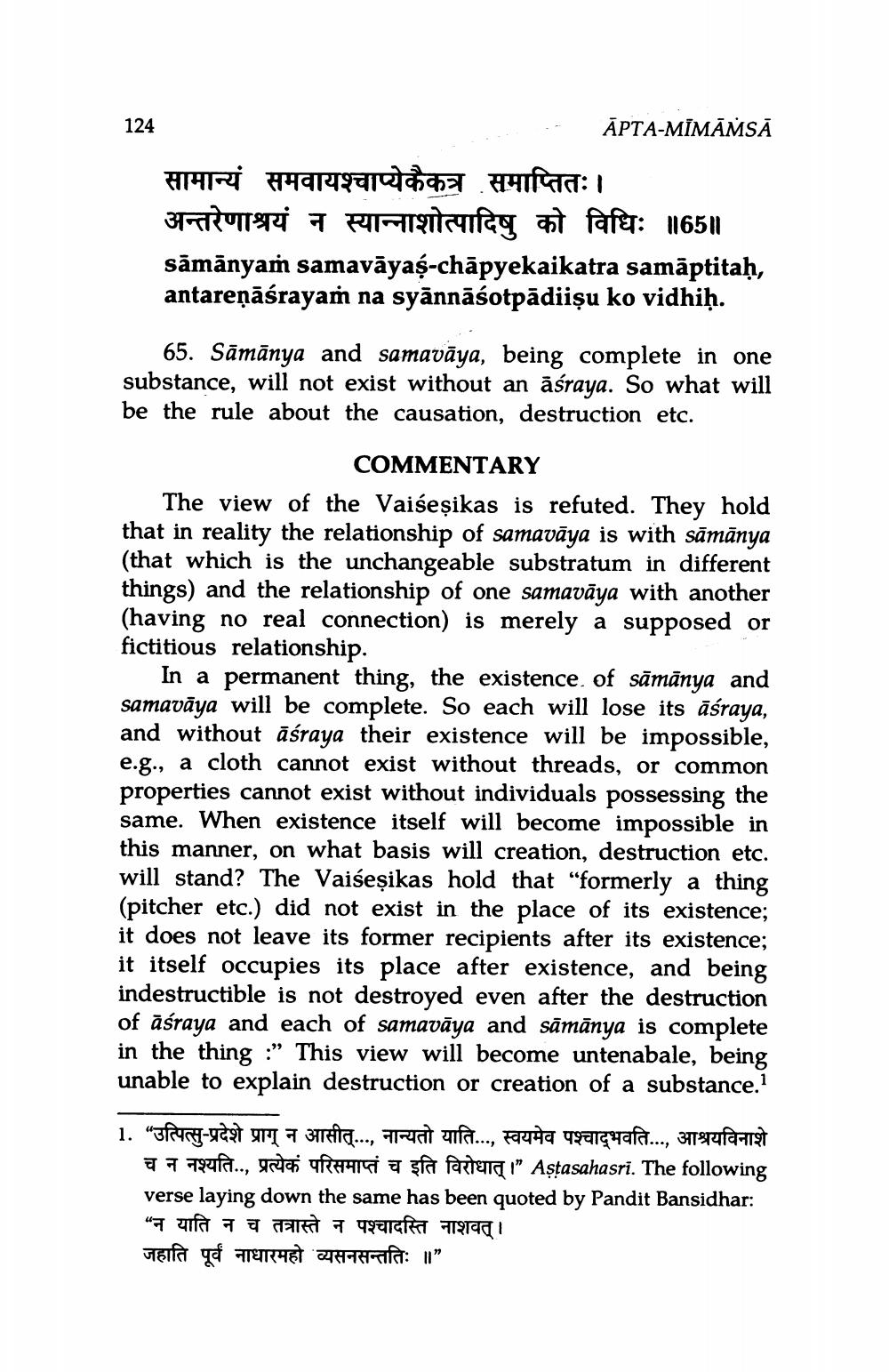________________
124
ĀPTA-MĪMĀMSĀ
सामान्यं समवायश्चाप्येकैकत्र समाप्तितः। अन्तरेणाश्रयं न स्यान्नाशोत्पादिषु को विधिः ॥65॥ sāmānyaṁ samavāyaş-chāpyekaikatra samāptitaḥ, antareņāśrayam na syānnāśotpādiișu ko vidhiḥ.
65. Sāmānya and samavāya, being complete in one substance, will not exist without an asraya. So what will be the rule about the causation, destruction etc.
COMMENTARY The view of the Vaiseșikas is refuted. They hold that in reality the relationship of samavāya is with sāmānya (that which is the unchangeable substratum in different things) and the relationship of one samavāya with another (having no real connection) is merely a supposed or fictitious relationship.
In a permanent thing, the existence of sāmānya and samavāya will be complete. So each will lose its āśraya, and without aśraya their existence will be impossible, e.g., a cloth cannot exist without threads, or common properties cannot exist without individuals possessing the same. When existence itself will become impossible in this manner, on what basis will creation, destruction etc. will stand? The Vaiseșikas hold that "formerly a thing (pitcher etc.) did not exist in the place of its existence; it does not leave its former recipients after its existence; it itself occupies its place after existence, and being indestructible is not destroyed even after the destruction of asraya and each of samavāya and sāmānya is complete in the thing :” This view will become untenabale, being unable to explain destruction or creation of a substance.
1. “fetay-pant yra 7 Brita..., a ufa..., Fauna Targuaf..., 3 TSusangt
a 7 794f..., orta RHAITI a sta partera.” Astasahasri. The following verse laying down the same has been quoted by Pandit Bansidhar: “न याति न च तत्रास्ते न पश्चादस्ति नाशवत्। जहाति पूर्वं नाधारमहो व्यसनसन्ततिः ॥"




